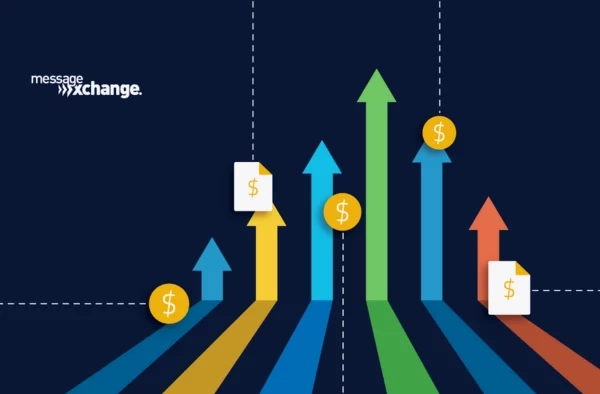3 steps to get ready for e-invoicing regulations
Share

The New Zealand Government is focusing on improving payment times for small businesses, and expanding the use of eInvoicing to Crown entities is part of that plan. Currently, 32 Central Government agencies are required to receive eInvoices from their suppliers, but the latest proposal from Hon. Minister Andrew Bayly could extend this requirement to 100 Crown entities, marking a significant shift in how government entities handle invoicing.
What is eInvoicing?
Simply put, eInvoicing is the direct exchange of invoices between invoicing software systems. For accounts payable teams, it means invoices land directly in your software without any manual input. For accounts receivable teams, it’s about moving away from PDF invoices and sending them directly from your software.
Over 22,000 New Zealand businesses and government entities are already using eInvoicing, including many that use MessageXchange’s service, such as Inland Revenue and the Ministry of Social Development.
How to get ready for a possible mandate
Australia implemented a similar requirement in July 2022, demonstrating that eInvoicing mandates are not entirely novel. While the proposal to extend e-invoicing requirements to certain Crown entities is still being decided, it’s smart to get prepared now. You can beat the rush and start benefiting from eInvoicing ahead of any potential mandate.
Here’s how you can prepare and ensure you’re ready:
- Evaluate your current software and processes: Identify where eInvoicing could fit into your workflows. Consider the number of invoices you process, as well as whether you’ll need to send eInvoices, receive eInvoices, or both. This will help determine the best solution for your needs. It’s also important to ensure your software is ready for e-invoicing. It may be included with your software; however, we’ve found that many software packages used by Crown entities may require customers to find their own ‘Access Point’ to facilitate e-invoicing.
- Involve your internal teams: Make sure relevant departments like finance, procurement, and IT are involved in the eInvoicing project. Their input will help ensure the solution meets everyone’s needs.
- Choose the right Access Point: When selecting an Access Point provider, consider their technical capabilities, integration options, and additional services. Make sure they can handle invoicing and other functions that could benefit your business. Look for a provider with a strong track record in e-invoicing and related services. Their experience can provide valuable insights and help you avoid potential pitfalls.
Once you’ve set up eInvoicing, the next step is to make the most of your investment by getting your customers and/or suppliers on board. This is where we offer services to help make this process as simple as possible.
If you’re ready to explore eInvoicing and see how to get ahead of the mandate, MessageXchange’s experts are here to help. Get in touch, and we’ll guide you through the process.
As Managing Director, John oversees strategy, operations and innovation of MessageXchange. He continuously monitors all industries to guarantee that MessageXchange continues to push the limits of technology and offers the most advanced technology to support our clients' growth.
John and the company have been involved in electronic invoicing, or eInvoicing, for over 20 years, and more recently has been involved in the launch and adoption of Peppol eInvoicing in Australia and New Zealand. MessageXchange is trusted by the Australian Peppol authority, the ATO, as well as New Zealand's Inland Revenue, Ministry of Social Development and more.



Today’s Pick
11th Annual Aus Goverment Data Summit
April 1, 2025
7th Annual NZ Government Data Summit
May 7, 2025
3rd Public Sector Comms Week
May 14, 2025
Subscribe
We send emails,
but we do not spam
Join our mailing list to be on the front lines of healthcare , get exclusive content, and promos.
AI appointment Australia Australian boost boosts business businesses covid-19 cyber cyber attack cybersecurity cyber security data data breach data management defence Digital employment enhance enhances fraud funding governance government grants infrastructure Innovation Lockdown management new zealand NSW NZ online privacy public Public Sector queensland renewable energy scams security Social Media Technology telecommunications victoria
-

Understanding and building your digital strategy
Digital Government, Opinion
-

Featured Leader: Jamie Morse on multi-channel strategies for communication
Communications, Featured Leader
-

Featured Leader: Tegan Tembe of NSW Treasury on creating solid planning strategies and processes
Featured Leader
-

Wirraka Maya Health Service improves patient care with My Health Record
Learning
Show More-

Effects of ineffective communication in the workplace
Communications, Personal Development
-

7 ways you can enhance your personal development skills
News, Personal Development
-

5 advantages of working in the public sector
News, Personal Development, Professional Development
-

7 causes of communication issues in the workplace
Communications, News, Personal Development
Show MoreLast Viewed